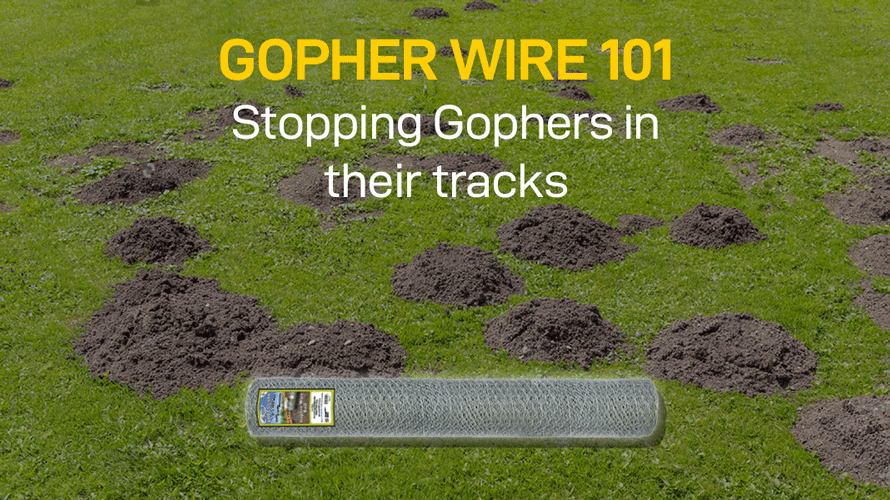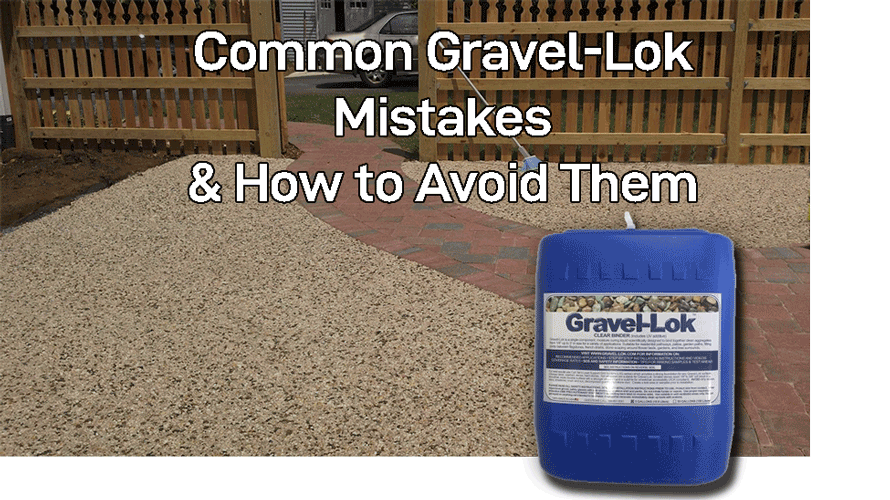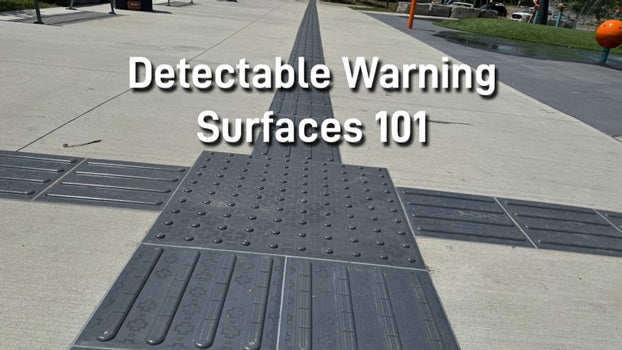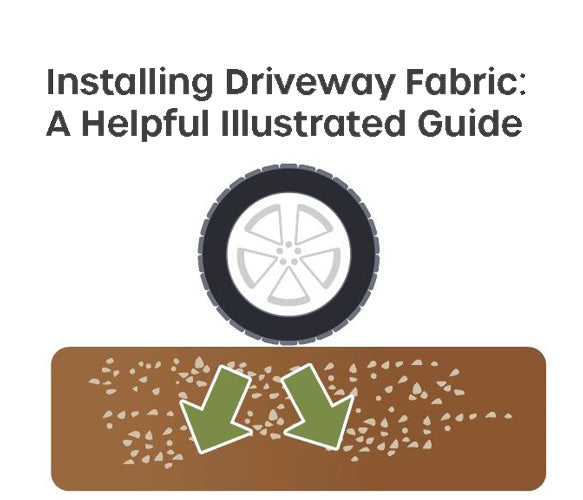The Ultimate Guide to Geotextiles
The Ultimate guide
to geotextile Fabric
Overview
This article will cover the following topics about Geotextile Fabrics and their use so you can be sure you're selecting the right fabric for your application.
- What is a Geotextile?
- What are Geotextile fabrics made of?
- What are the differences between Woven and Non-Woven Geotextiles?
- a brief history of Geotextiles?
- What are the 6 primary applications of Geotextiles?
- Separation, Stabilization, Reinforcement, Filtration, Moisture Barrier, Drainage
What is a Geotextile?
A Geotextile is permeable fabrics that can filter, separate, reinforce, drain, or protect the soil. These kinds of fabrics are usually made from polyester or polypropylene and typically made in three forms; woven, needle punched, and heat bonded.
Geotextiles can endure a wide range of extremities. They are long-lasting and able to soften the fall when someone falls on them. Permeability means the surface of geotextiles has tiny pores that allow gases or liquid to pass through.

What are Geotextile Fabrics Made of?
Geotextiles are usually made from polyester or polypropylene. The fibers used in manufacturing geotextile are constructed of natural or synthetic fibers depending on the desired application.
Natural fibers are usually in the form of paper strips, wood shavings, jute nets, or wool mulch. In some soil reinforcement projects geotextiles must last for more than a hundred years. However, bio-degradable natural fabrics are intentionally made to have a short lifespan. They are usually used in inhibition of soil erosion until vegetation grows in the area.
Types of Natural Fiber Geotexiles
- Jute: This is a versatile vegetable fiber that is highly biodegradable and can perfectly mix with the soil and provide nutrients for the vegetation. However, quick biodegradation is also a weakness when used as a geotextile. Nevertheless, their lifespan can be stretched up to 20 years through various treatments and blending. Therefore, it is possible to manufacture customized biodegradable jute geotextile with specific tenacity, porosity, permeability, as well as transmissibility as per the need and location. Factors such as the amount of water available, soil composition, water flow, water quality, and landscape among others will determine the application and the choice of jute geotextile to use, including.
- Coir: also known as a Coir mat is a type of natural fiber made from the natural fiber that taken from the exterior husk of coconuts. Often this materials is made into Turf Reinforcement Mats (TRM), doormats, mattresses, or even into brushes. Many enjoy the natural aspect of using coconut fiber instead of synthetics and its naturally durable properties along with its resistance to salt water damage also being desirable.
Synthetic fibers used as geotextile raw materials are typically polyamide, polyester, polyethylene, and polypropylene. The last one is the oldest synthetic fiber, having been discovered in 1931. Many nonwoven fabrics are made of synthetic fibers using the "needlepunching" process shown below.
Types of Synthetic Fiber Geotextiles
- Polyamide (PA): Polyamide is further categorized into two – Nylon 6 and Nylon 6.6 however, they are rarely used in geotextiles. The first polyamide (Nylon 6) is an aliphatic polyamide made from the polymerization of petroleum derivative known as caprolactam. The second type of polyamide is made from the polymerization of the salt of adipic acid as well as hexamethylene diamine. They are produced in the thread-like forms which are then cut into small granules. The resulting products usually have much more strength but with fewer moduli compared to polyester and polypropylene. They are also susceptible to hydrolysis.
- Polyesters (PSF): Are synthesized by polymerization of ethylene glycol with either terephthalic acid or dimethyl terephthalate acid. The resulting product has much more strength modulus, skulk resistance as well as general chemical inertness, thus making it a perfect fit for geotextiles. However, it is affected by a polar solvent such as phenol, benzyl alcohol, and meta-cresol, and at the pH range of between 7 and 10, it can last up to 50 years. This geotextile material possesses very high resistance to UV radiation. However, its installation should be done with care to prevent unnecessary exposure to ultraviolet radiation.
- Polyethylene (PE): Can be manufactured in a crystalline form, which is an essential trait in any fiber-forming polymer. The three main types of polyethylene are low density (LDPE), linear low density (LLDPE), and a the very common high density (HDPE). HDPE can also be found in a number of Root Barriers or Bamboo Barriers.
- Polypropylene (PP): A crystalline thermoplastic made by polymerization of propylene monomers with catalyst Zeigler-Natta.

Illustration above of the needle-punching process used in forming non-woven geotextiles
Whats the Difference Between a Woven and Non-Woven Geotextile?

Woven geotextiles are made by blending and weaving textiles together on a loom, creating a single an even length. The end product is not only sturdy and strong, which makes them excellent for applications such as car parks and road constructions but also incredibly well equipped to endure any ground stabilization problems.
The resulting products are moderately impermeable and don’t provide the best separations against fines. However, woven geotextile will resist any UV degradation and be a better fit for long-lasting applications.
Mostly, woven geotextiles are measured based on tensile strength as well as strain, which is the material’s resistance to breaking tension.
Woven geotextiles provide drainage by enabling water to seep through while filtering out the sediments that might block the rest of the drainage system. They also protect the construction project against erosion by functioning as a separation barricade between the materials below and above the textiles.
Though all geotextiles can accomplish all these tasks the six primary functions of a geotextile are to filter, drain, separate, reinforce, waterproof, and protect. For the road construction project, different fabrics are required for different tasks. And for you to decide which geotextile is right for your construction project, you must start with your end objective in mind.
"The six primary functions of a geotextile are to filter, drain, separate,
reinforce, waterproof, and protect."
Woven textiles can be produced from a number of materials; however, the most common one is typically weave or yarn-blend. When completed, woven geotextiles usually resemble plastic sheets, with the weaving only differentiated upon close examination. Whether you need a medium – or light-weight weave will depend entirely on the purpose of your construction project.

With woven geotextile, the impermeability is a massive asset where the top priority is strength. And having said that, it can be a disadvantage where the major priority is drainage because its tight woven tapes don't allow water to pass through to the lower layers of the fabrics.*
As time progresses, the development of woven geotextiles has resulted in more efficient materials. These new developments have led to the improvement of flow rate as well as higher interaction coefficients, thus making them more suitable for almost all kinds of civil applications by offering confinement, separation, and reinforcement. They also allow for much more improved filtration and drainage.
*Note there are now High Performance Woven Fabrics available that do allow for both high strength & drainage
Nonwoven geotextiles are manufactured by entangling fibers, both long and short, together through either needle punching or other suitable methods. In some instances, thermal treatment is used to improve further the tensile of the geotextile. Because of this manufacturing process, alongside their permeability, non-woven geotextiles are typically used in drainage applications, separation, filtration as well as protection.
Needle-punched non-woven fabrics are usually made by taking a huge number of tiny textiles and using a barbed needle to mesh the fabrics together.
Non-woven geotextiles are usually measured by their weight, for example, gsm/grams per square meter, or ounces per square yard.
The non-woven geotextile usually breaks down quicker than woven geotextiles. However, for construction projects where water pooling is the main concern, non-woven fabrics are usually the best choice as they enable better drainage.
The differences between non-woven and woven geotextiles can be hard to establish when looking at the specifications of the materials. But, woven geotextiles are generally made with higher strength, while non-woven geotextiles have much higher flow rates.

Differentiating the fabric
The easiest way to differentiate between the two fabrics is by checking the elongation. Generally, non-woven geotextiles have much higher elongation than their woven counterparts. A non-woven geotextile specification will include elongation as superior to 50%, while woven geotextiles list elongation as low as 5% and 25%. Sometimes this is not even listed.
Usually, when one looks for the differences between woven and non-woven fabrics, they tend to confuse the weights between the two. The weight of woven geotextile is seldom listed because these materials are usually used to offer separation and reinforcement, and thus are not weight dependent.
On the contrary, the weight of non-woven geotextile is a common differentiation, often nonwoven fabrics will be named by their ounces per square yard such as 4oz, 6oz, 8oz, 10oz, and so on. The higher the weight the more heavy duty the fabric.
Geotextiles have always been measured by their weight, so a finished fabric would be 8oz per square yard. The two other specifications – strength and puncture – would be direct to the weight of the product.
Often Nonwoven fabrics will be named by their ounces per square yard such as 4oz, 6oz, 8oz, 10oz, and so on.
The higher the weight the more heavy duty the fabric.
What is the History of Geotextiles?
Geotextiles were originally referred to as filter fabrics. While many people believe geotextiles were first made by R.J Berrett in the 1950s, the history of these materials goes further back. In the age of pharaohs, geotextiles were often used in roadways constructions to offer more stability on the roads and their edges.
Geotextiles are believed to be among the first even textile products to be used by humans in history. Many Egyptian excavation sites have revealed the use of grass mats and linen. During the early times, geotextiles were made with natural fibers or a mixture of vegetation and soil to enhance the stability of roads.
How are Geotextiles Used Today?
Geotextiles are everywhere in new construction. They can be found in roads, railways, harbor works, drains, breakwaters, and on hillside erosion control applications. The most common applications of geotextiles include Separation, Stabilization, Reinforcement, Filtration, Moisture Barrier (or waterproofing), and Drainage.
6 Applications of Geotextiles:
1. Separation
Fabric is laid between two layers of different materials, such as two different soil types, new construction, and soil, or new and old pavement. Separation is sometimes used interchangeably with stabilization, but there are fine distinctions.

2. Stabilization
In stabilization, the fabric is applied on top of a material that is highly compressible. Most often, this material is wet, soft soil. Here, the geotextile allows water to seep from the soft soil to draining material. As a result, it consolidates the basement layer, thus strengthening it and making it a more trustworthy base.

Above Geotextile Road Base Fabric Illustration by Tencate Geo
3. Reinforcement
In reinforcement, the geotextile acts as a source of strength instead of strengthening the bottom layer like in stabilization. Using geotextile as reinforcement material is usually in the following areas:
- Steep slopes: allows the building of steeper slopes as well as save the needed land surface and seal material
- Retaining walls: in this application, the retaining walls with geotextile materials accommodate settlements much effective than traditional construction materials.
- Control water erosion of bay shores, sea embankments.
- Land reclamation using hydraulic fill

4. Filtration
Using geotextile infiltration is similar to using in stabilization. The main aim in both cases is to allow the passage of water from the covered layer. The goal of this application is to remove water while preventing soil and or any other fine particles from passing through. This is achieved in combination with a filter behind the geotextile. In this process, water is removed, rather than being filtered into a different material.

5. Moisture Barrier
This application is almost the direct opposite of the above applications. In the moisture barrier, the geotextile is used to block water rather than allowing water to pass through. This is accomplished by applying an asphaltic suspension. As a result, the fabric becomes impermeable and suitable for use in construction projects such as pavement rehabilitation.
6. Drainage
Geotextile material can help gather water or gas and then transport it along its plane, therefore providing seamless transmission. This process is what is traditionally called drainage function, which can be highly effective in chimney drains as well as drip drains.
Resources:
- Dr. Bipin J Agrawal , Technical Paper. Accessed January 2020 “GEOTEXTILE: IT’S APPLICATION TO CIVIL ENGINEEERING – OVERVIEW” B.V.M. Engineering College,.
- History of Geosynthetics, Wikipedia, Accessed January 2020 "https://en.wikipedia.org/wiki/Geosynthetics"

Ryan Matheson
Product Director
Ryan is member of the Mainline product team and as a former landscape contractor lends his expertise to Mainline blog. Ryan can be reached by emailing Support@ mainlinematerials.com
related posts
How Do Detectable Warning Surfaces Work?
Detectable warning surfaces help people with visual impairment to know where pedestrian transitions are. Required by the ADA Americans with Disabilities Act they are placed near intersections and on transit platforms. These ground mats have noticeable contrasting colors and raised domes for multi-sensory feedback.
Installing Driveway Fabric: A Helpful Illustrated Guide
Driveway fabric works by providing a separation layer between the driveway gravel and the earth below. Due to its high tensile strength, the fabric acts as a stabilizing layer and reduces the amount of rock required by up to 30% which results in a reduction of labor and overall cost.
Mainline newsletter
Get product reviews, industry guides, and installation tips as
soon as they're published




